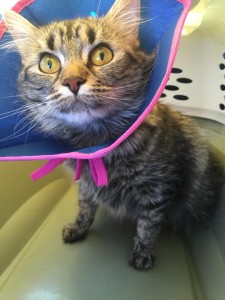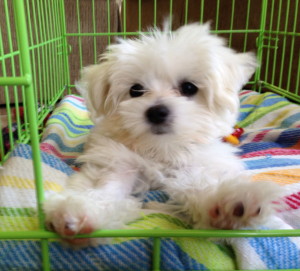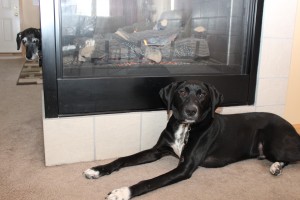(DISCLAIMER: We are dog trainers and pet sitters. Any tips or information in these blogs are things we have found helpful in our years of experience. We are not veterinarians and any questions about health or nutrition should be directed to your veterinarian.)
It’s that time of year again. Your palms are sweating, your heart is racing, and there’s a knot of dread in your stomach. It’s time to take your pet to the vet for his annual checkup. You know as soon as you pull in, your pet becomes a drooling, shivering, mess. You’re wondering if there’s a way to make it less stressful on both of you. The good news is yes, there is!
One of the reasons why pets get so stressed at the vet is every time they go they get shots and handled in a way that they are not accustomed to. They have learned over time that scary things happen every time they go. Here are a few tips to make the next vet visit less scary.
Get your pet used to riding in a car
If your dog or cat only gets in the car when they go to the vet, taking them for a drive on a regular basis will help them to be more calm. Give them treats to help them build a positive association with the car. Remember to use appropriate safety restraints every time you take your pet for a car ride.
Leave the cat carrier out at all times
Most cats know when they see the carrier come out of the basement or closet, that it’s time for a trip to the vet. Instead, leave the carrier out where your cat can go in and out as they please on a regular basis. This way the crate becomes a place of fun and safety for them. If you don’t like the way it looks in a room you can always find a decorative blanket to cover it with or place it under an end table. Right before it is time to leave, you can use catnip or toys to encourage your cat to go in. Using a pheromone spray such as Feliway on the carrier can help calm your cat as well.
Bring your pet to the vet just to visit
Bring your pet into the clinic just to say hello so they can make positive associations with their trip. Give them treats in the lobby and allow the staff to pet them if they have time. For dogs, you can use treats to lure them onto the scale. This will help them to look forward to visiting the vet rather than knowing every time they go that something scary will happen.
Making positive associations with “scary” things the vet may look at
Help your dog or cat feel more comfortable with the “scary” things that may happen at their exam or even a trip to a groomer. While spending time with your furry friend at home make sure to handle their ears, toes and maybe lift a lip to peek at their teeth during a petting session if they allow it. Don’t do too much too quick and when handling these areas accompany it with praise and treats. Remember not to push any limits at home and watch for signs of fear and or aggression and back off if you see this. While it may not seem like a big deal to us these parts can be scary for your pet to let someone handle.
If these tips do not seem to reduce your pet’s anxiety at the clinic, talk with your veterinarian. There may be medications that your vet can prescribe that will make your pet more comfortable.
Regular veterinary checkups are important to the health and well-being of your pet. These tips should help make your next vet visit less stressful for you both!



